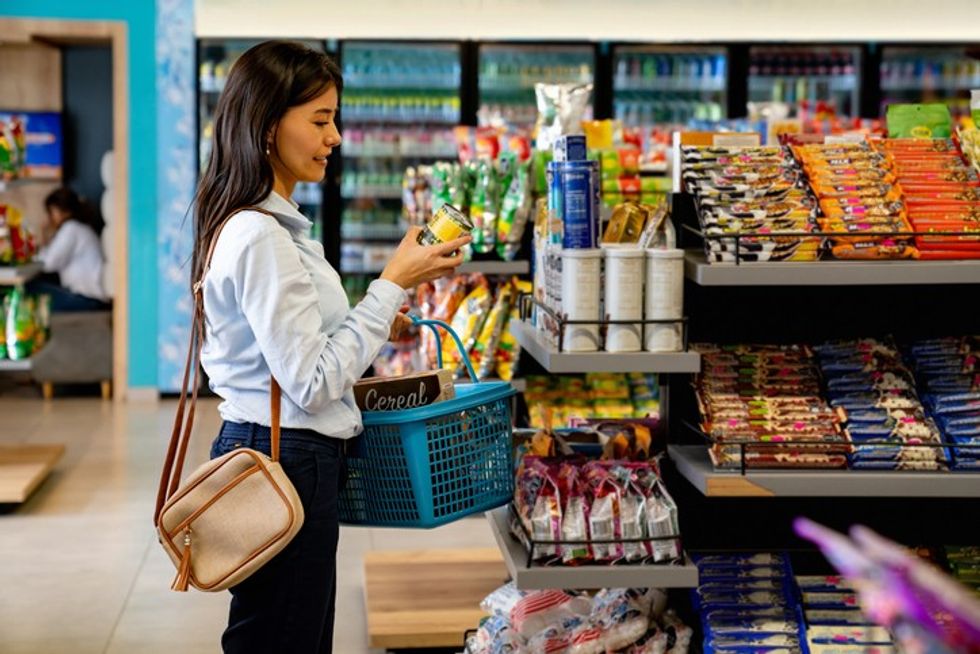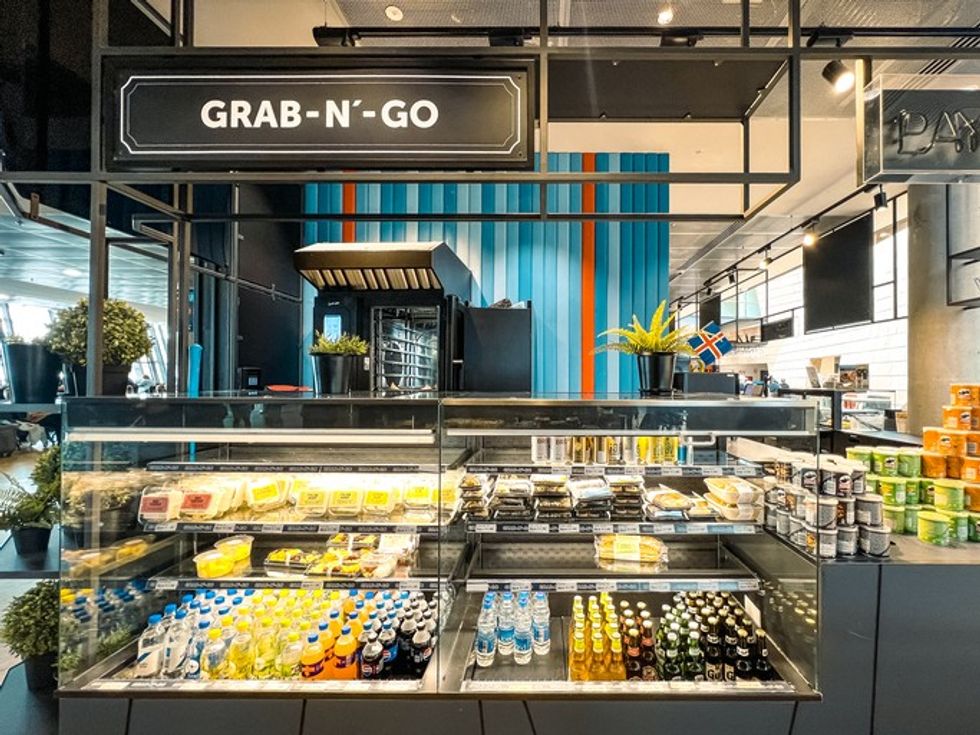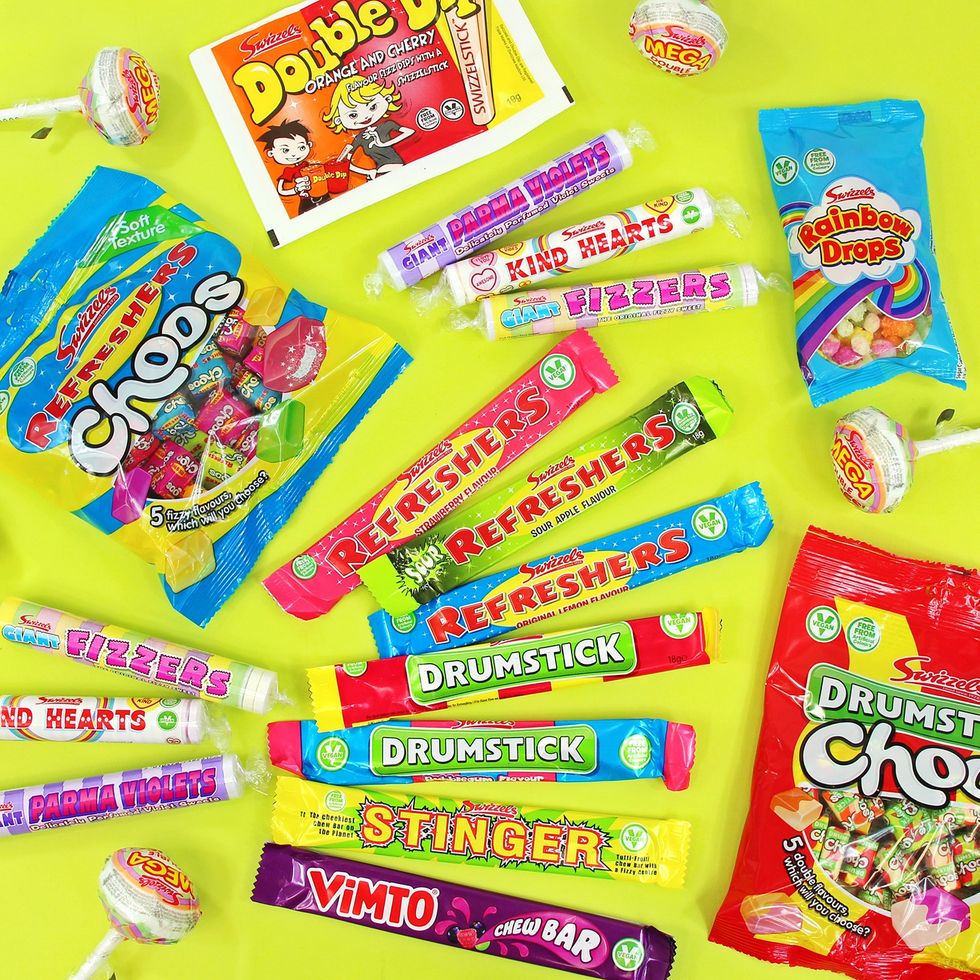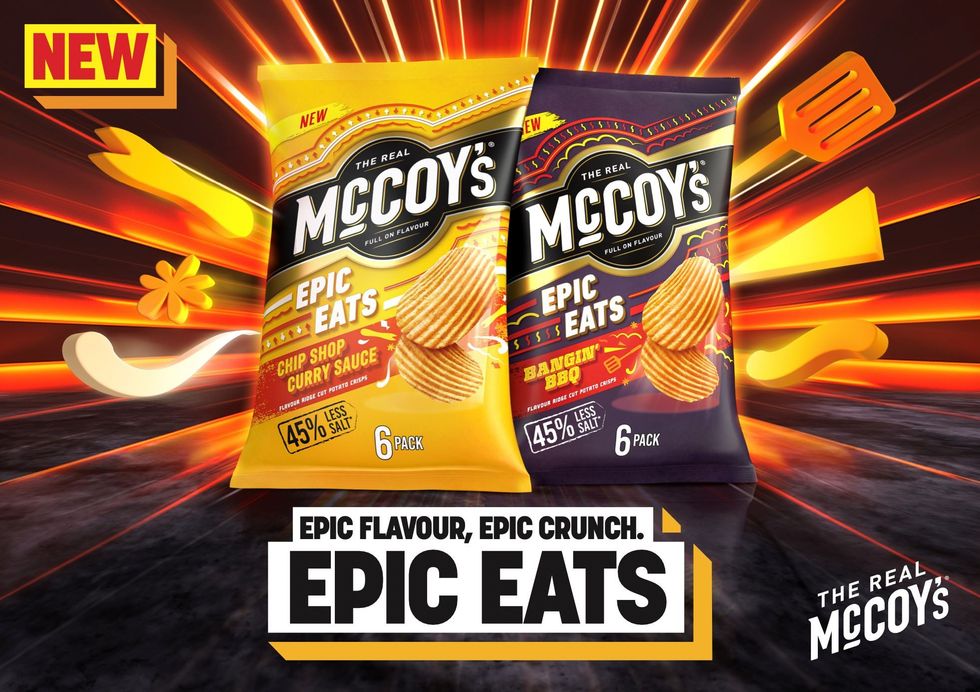For years, convenience stores were the underdog of retail—handy, sure, but not exactly glamorous. Today, they are the unsung heroes of British life, adapting to seismic shifts in consumer behavior, economic realities, and global trends.
With the ease of flexibility and personal touch, it is safe to say some of them are even better than the nearest supermarket giant.
The recent years have proven to be a turnaround time for convenience stores.
Smashing the projected threats first from supermarkets and then from quick delivery apps, the convenience channel continues to grow at its own pace. It is projected to touch a market value of £48.6 billion by 2025.
The future is certainly bright with predictions of a compound annual growth rate (CAGR) around 2.6 per cent between 2022 and 2025. According to Statista, by 2026, the convenience market value would exceed £50 bn.
It’s not just about the numbers—it’s how people shop.
With hybrid working sticking around, people are shopping differently. The convenience store isn’t just for emergency milk runs anymore; it is more of a community hub where shoppers can find their favourite hot meal solutions, fresh produce, and even online order pickups.
Forecourt stores are also evolving. Parfetts’ new commuter-focused symbol format is a sign of things to come. Expect more niche formats tailored to specific lifestyles, whether it’s busy commuters, fitness enthusiasts, or eco-conscious shoppers.
And if the crystal ball for 2025 is accurate, convenience stores are set to shine even brighter. Let’s dive into the big trends and changes shaping the year ahead.
Shift in consumption habits
The popularity of hot and spicy flavours within the crisps, snacks and nuts category will continue in the new year, with this profile ranking as the third largest flavor within branded snacks.
As shared by Matt Collins, Sales Director at KP Snacks, taste remains the top category driver, He said, “Our portfolio taps into the demand for bold, innovative flavours with a range of products – from classic Nik Naks Nice ‘N’ Spicy to our KP Nuts Thai Chilli Coated Peanuts.
“Our McCoy’s brand, the UK’s number one ridged crisp, also caters to the demand for bold, punchy flavours, delivering exciting NPD including McCoy’s Epic Eats Flamin’ Fajita.”
The PMP format has seen significant growth in recent years and will remain popular in 2025, offering consumers great value for money and clear pricing which reassures them that they’re getting a good deal.
PMPs are driving the snack category, giving shoppers a sense of value and retailers a surefire way to boost impulse purchases. Did you know 57 per cent of impulse shoppers choose PMPs?
The £1.25 PMP format, now worth £321.9m, is proving particularly popular, growing at 4.1 per cent annually. The £1.25 PMP format is especially important for Independent and Symbol stores, representing 50 per cent of CSN sales in this channel.
Health-consciousness is now the new normal, but let’s not kid ourselves—people still want their treats. The key? Snacks that feel indulgent but don’t come with a side of guilt. Enter protein bars disguised as chocolate, air-popped crisps, and plant-based jerky.
Consumers now are more conscious than ever about how food makes them feel, with a growing demand for high-protein and vitamin-packed options.
The trend towards wellness doesn’t just stop at physical health – it’s also extending into mental health. Brands that can address how food can support overall wellbeing should be able to stand out.
According to Mintel’s 2025 Global Food and Drink Trends report, the focus will be on food and drink brands streamlining health messaging and clearly communicating the nutritional value of their products.
The report basically explores the paradoxes that influence people’s behaviors toward food.
First is the ‘fundamentally nutritious’ trend which recognises how consumers have become more knowledgeable about diet and attach value to nutrition claims. In reaction, we see more on-pack nutritional claims and advice about healthy eating and ultra-processed food from businesses and influencers.
Coinciding with this is an increased awareness of weight loss drugs. Europe is currently behind the US in terms of uptake, but the potential is clear- 46 per cent of UK under-35s say they’d be interested in using them.
Gone are the days when “healthy” meant tasteless rice cakes and sad salads. In 2025, health and indulgence will coexist beautifully. Expect a continued boom in plant-based eating, functional foods, and beverages that do more than quench thirst.

Mental health is the next frontier for food innovation. Products designed to reduce stress, improve sleep, or boost focus are gaining popularity. Think adaptogen-packed teas, mood-enhancing snacks, and even “calm chocolates.”
Functional foods are also gaining traction. Products infused with probiotics, adaptogens, or omega-3s are no longer limited to specialist stores—they’re becoming staples in the convenience sector. Expect more “gut-friendly” yogurts, mood-boosting drinks, and brain-health snacks on shelves by 2025.
Today’s consumers are not only more health-conscious, they are becoming more aware and somewhat finicky over the source of their food. Shoppers are demanding healthier snacks, organic produce, and products that cater to specific dietary needs.
As a response, retailers are expanding their vegan ranges, with brands like Aldi’s Plant Menu and Tesco’s Wicked Kitchen leading the charge. Convenience stores must adapt by stocking high-quality plant-based options that appeal to a diverse audience.
Local sourcing is more than a trend; it’s becoming a necessity. Brexit-related challenges have made imports pricier, but consumers are embracing the shift. They’re drawn to farm-fresh eggs, artisanal cheeses, and craft beers that reduce food miles and support local producers.
But this isn’t just about patriotism. Local sourcing reduces food miles, aligns with sustainability goals, and helps retailers hedge against global supply chain issues. It’s a triple win, and we’ll see more of it in 2025.
For convenience stores, they prove to be cherry on the top. Retailers like Kaual Patel have taken the idea of local miles ahead by collaborating with a local brewery to come up with a own-branded beer line.
While Patel’s initiatives spoke volume of what can be done, highlighting local line of products is something convenience retailers can easily do to have a unique line of products.
Consumers are showing a strong preference for local and seasonal products, which are perceived as fresher and more sustainable. This shift is particularly evident in travel hubs, where 60 per cent of consumers express interest in regional delicacies, claims Lupa Foods’ UK Food Market Trend Report: 2024-2025.No wonder, businesses that emphasize local sourcing and sustainable practices are likely to see increased customer loyalty.
Food and convenience retail expert Scott Annan is a huge fan of proprietary fresh food. He has been advocating retailers to stock this line to combat competition, legislative complexities and thin margins on conventional branded products.
The Grab-and-Go Goldmine
While city-center convenience stores took a hit during the lockdowns, the resurgence of commuting has reignited the food-to-go market. Rising demand for food to go pumped growth into convenience stores last year, as the channel enjoyed a 5 per cent rise in value.
According to the Convenience Market Report 2024 by Lumina Intelligence, hybrid work patterns were fuelling the need for quick and convenient food-to-go options during commuting and work-from-home days.
Time-poor shoppers were also increasingly turning to their local convenience stores for dinner solutions, the report added, highlighting the opportunity for a diverse chilled and frozen range.
The channel saw wholesalers and symbol groups ramp up their food-to-go offer to cater for demand over the past year. The report said meal deal offers, including those stemming from loyalty programs, have helped provide convenience shoppers with affordable choices to meet their food-to-go needs.
The trend is only expected to gain momentum in the coming years.
2025 will see a growing demand for premium on-the-go meals, especially at breakfast and lunch. Bidfood’s 2025 Food & Drink Trends Guide highlights the popularity of dishes like stacked sandwiches, acai bowls and poke or energy salad bowls. These on-the-go, nutritious options are perfect for busy consumers who still want to make healthy choices.
Consumers are also looking for dishes that contain ingredients associated with gut health e.g. beans and pulses, nuts and seeds. From a cuisine perspective, Bidfood expects Cajun, Creole, soul food dishes, fondues, sauces like Piri Piri or chimichurri, kofte kebabs, pide pizzas and Greek salads to gain more momentum.
According to IGD, the UK food-to-go market is anticipated to see positive market growth over the next few years and by 2028 is expected to increase in value by almost 40 per cent on 2019 levels, emphasizing the importance for retailers to offer quick, quality meal solutions.
Retailers like Co-op, and Spar are leading the way, offering everything from grab-and-go sandwiches to premium coffee to even home-made hot Indian snacks like samosas.

To stay competitive in 2025, convenience stores must offer transparent, health-focused options that cater to the specific dietary needs and tastes of their customers.
The “fakeaway” trend, where consumers opt for high-quality, ready-to-eat meals instead of traditional takeaways, is also gaining momentum. Premium products like gourmet pizzas are driving this trend, offering restaurant-quality experiences at home.
Drinks will be having a moment in 2025. On the hot side, premium hot chocolates with toppings like roasted marshmallows or caramel drizzle will be stealing the show. Think chocolate chai and deluxe s’mores hot chocolate—indulgent, Instagram-worthy, and perfect for the season.
Whole Foods Market’s Trends Council predicts a rise in hydrating ready-to-drink beverages in 2025.Consumers will continue to seek out hydration solutions with added benefits and enhanced flavours, like sparkling coconut water and protein-infused drinks.
Consumers are also seeking bold, exotic flavours in their hydration choices. As the lines between alcoholic and non-alcoholic beverages blur, sodas with sophisticated, muted sweetness and more complex flavours are expected to be in demand. Even nostalgic flavours, like old-school sodas and root beers, are making a comeback as more people explore low or no-alcohol options.
Irish whiskey, Guinness, Bourbon and Portuguese wine will be growing in popularity. Out of beers, lager is the most engaged drink, and out of wines, white wine, red wine and prosecco are leaders in this market and will continue to grow in popularity.
In fact, the cream liqueurs category has grown by nearly 20 per cent compared to a year ago and is set to rise in popularity in 2025. This coincides with the growing Chocolicous trend as cream liqueurs will be advantageous when creating innovative chocolate drinks and desserts.
Furthermore, Bacardi’s 2025 Bacardi Cocktail Trends report states that in 2025, cocktails will act as a conduit for connection – bringing people closer to new interests, new knowledge, new experiences.
The love for cocktails continues at home too. Retailers can take on the role of educator here, advising the shoppers on pairing and proportions. Bacardi’s top 10 global cocktails for 2025 are Mojito, Margarita, Spritz, Piña Colada, Gin & Tonic, Rum & Coke, Whisky & Coke, Dry Martini, Vodka Lemonade and Vodka Soda. All of these are easy to create at home.
Low-alcohol volume sales almost doubled in 2023and considerable growth is expected over the next few years, particularly driven by low-alcohol beer. Many beer and wine brands are lowering their alcohol content (ABV) to take advantage of the UK’s new excise duty regime, although this is poised to bring renewed challenges for wine in particular when more changes are introduced during 2025.
Buzzing and trendy
Things are also buzzing at the wholesale side. A new brand new buying group will be launched on Jan 1 2025, bringing together the members of Confex and Fairway Foodservice. Titled as The Wholesale Group, the new buying group is already being touted as “the buying group for the future” as it promises to offer logistics efficiency via central distribution as well.
In terms of footfall, the retail sector will likely see minimal change in 2025, though consumer behavior will shift toward even more price-driven decisions.
With households becoming more conscious of their spending, value and affordability will be the primary factors influencing purchasing choices. This trend may benefit discount supermarkets and those offering competitively priced private-label products.
Vegan wave is on the rise among confectionery shoppers to so make sure that the store has a line to flaunt that feature, especially when Veganuary is around.
Swizzels is increasing production to meet the growing demand for vegan sweets in time for Veganuary 2025.Popular products like Variety Bags, Drumstick Choos, and Refreshers Choos are among Swizzels’ vegan sweets anticipated to see a significant rise in popularity as consumers continue to seek plant-based options from established brands.

Ah, sustainability—the buzzword that’s no longer just a buzzword. Consumers are no longer just asking for eco-friendly options; they’re demanding them.
To keep itself ahead of its time, Mondelēz International’s Cadbury core sharing bars, manufactured in Bournville and Coolock and sold in the UK&I, will be wrapped in 80 per cent certified recycled plastic packaging.Starting from 2025, in a phased approach, the project aims to cover approximately 300 million sharing bars across the UK&I Cadbury core tablet portfolio.
Retailers should opt actively to ditch plastic, source locally, and reduce food waste.
Expect more refill stations, where shoppers bring their own containers for pasta, grains, and even cleaning products. Tesco and Sainsbury’s are already piloting these initiatives, but the big challenge will be scaling them up.
After all, convincing a nation hooked on convenience to remember their jars and bottles is no small feat. Yet it is something that only convenience stores can achieve owing to the short distance and being in vicinity.
Brace for the impact
The year 2025 will be marked by a sea of legislative changes finally coming into effect. Many of these changes directly impact convenience stores and their shoppers so it is better to have a quick revision here.
From October 2025, children will no longer be exposed to TV adverts for unhealthy food products as under the new law set out on Dec 3, advertisements of unhealthy food products on television will only be allowed past the 9pm watershed. The advertising restrictions will also include a ban on paid online unhealthy food adverts.
Also, from Oct 1, 2025, the restriction of HFSS products by volume price will come into force, affecting multibuy promotion and promotion that indicates that an item – or any part of an item – is free. The restrictions will apply to medium and large retailers (with 50 or more employees).
Another ban that will greatly impact the convenience stores is the disposable vape ban, coming into effect from June 2025, marking a major change for thousands of retailers that currently stock these products.
From June 1 2025, only chargeable and refillable will be legal to sell. Anyone selling disposable vapes from June 1 2025 could get a £200 fixed-penalty notice, followed by further enforcement action if they continue to break the law. Better to keep yourself informed and updated so as not to fall on the wrong side of the law here.
As stated by ACS chief executive James Lowman, it is important that any retailer selling vapes not only prepare themselves for the change but also communicates with customers on the implications of the ban to avoid any potential confrontations or flashpoints in store.
Moreover, from March 31, 2025, under the new recycling legislation, businesses will be required to separate their dry recycling and food waste from their general waste by law. Under the law, businesses in England of 10 employees or more producing more than 5 kg of food waste per week must arrange for its separate collection by a licensed waste carrier.
Another legislative change that will impact the sector, albeit indirectly, is new packaging extended producer responsibility (EPR) scheme, businesses will bear the cost of packaging waste collection and sorting, with heavier packaging materials like glass facing higher levies.
The new tax, set to be introduced in 2025, threatens to drive up prices for consumers and could lead to brands shifting away from using glass products.

Amid this sea of restrictions, bans and changes, what retailers urgently need is a concrete action to tackle retail crime, a thorn in the side of the convenience sector.
The government’s proposed Crime and Policing Bill offers some hope. New measures include specific offenses for assaulting retail workers and ensuring that theft under £200 is investigated.
Multiple ministers have reiterated the same outline though concrete plans are expected to be revealed in 2025. So fingers crossed there!
The economy is the elephant in the room, and it’s stomping its way through 2025. The financial landscape for convenience stores is set to become more challenging.
The current 75 per cent discount on business rates, due to expire in April 2025, will be replaced by a 40 per cent discount, up to a maximum of £110,000. This reduction means many businesses will see their rates nearly double.
Moreover, employers' National Insurance Contributions (NICs) are slated to rise from 13.8 per cent to 15 per cent in April 2025. The threshold at which businesses start paying NICs will also decrease from £9,100 to £5,000, further increasing operational costs. The collective cost to the convenience sector next year is estimated by ACS at £397m (increase of £85m).
To top it all, From April 2025, the National Living Wage (NLW) will increase from £11.44 to £12.21 while 18-20 National Minimum Wage will rise by £1.40 per hour to £10 - the largest increase on record, marking the first step towards a single adult rate. The two are collectively expected to cost £513 million extra to the convenience sector next year, according to ACS.
For a convenience store like Tenby Stores and Post Office, everything is going to cost "about £23,000 extra a year”, as told by retailer Fiona Malone.
Happy New Year, Nevertheless
If 2024 taught us anything, it’s that the British shopper loves a good bargain. Inflation may have cooled slightly, but shoppers are still feeling the pinch. With even high-end retailers like Waitrose expanding their budget-friendly offerings, expect the private-label boom to continue.
On the flip side, premiumisation remains a countertrend. Shoppers are willing to splurge on small indulgences—think fancy chocolates
a balancing act, and convenience retailers will have to tread carefully to keep both ends of the spectrum happy.
Having a loyalty scheme on board is a great way to attract the shoppers. Lets not forget that most Brits (91 per cent) are now actively involved in loyalty programmes.
According to a survey, conducted over 1,000 UK consumers and insights from 36 GCVA member organisations, 94 per cent of those aged 66 and over are engaged in at least one scheme, alongside 81 per cent of young adults between 18 and 25. Schemes also appeal to those on both high and low incomes, with 96 per cent of those with a household income of over £75,000 actively involved in such schemes.

Some retailers are doing it on a small scale like offering £1 for an otherwise £1.49 for a coffee.Jisp, Shopt and LocalLoyalty by ShopMate are some of the great options to choose from.
2025 is shaping up to be a transformative year for convenience stores. Yes, there are hurdles—rising costs, new regulations, and shifting consumer expectations. But there are also incredible opportunities to innovate, connect with customers, and redefine the meaning of convenience.
Retailers who embrace trends like functional foods, local sourcing, and sustainability will be able to ride the wave efficiently. Whether it’s launching their own product lines, collaborating with local producers, or doubling down on health-conscious snacks, the possibilities are endless.
And for the industry as a whole, 2025 represents a chance to redefine what it means to be “convenient” in an ever-changing world.







